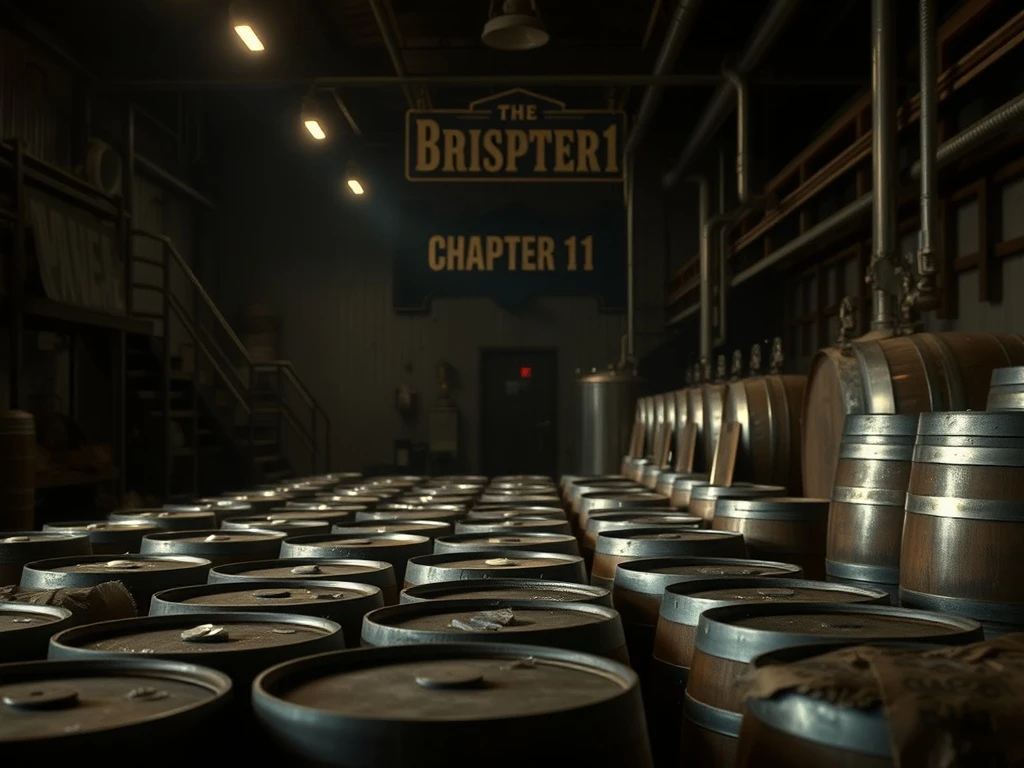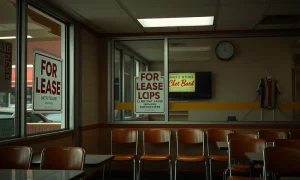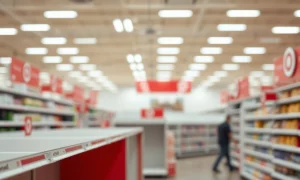The news reverberated through the business world: a beloved beer brand, a household name for generations, recently filed for Chapter 11 bankruptcy. This significant development marks a pivotal moment for the company, as it seeks to restructure its substantial debt. For anyone interested in the dynamics of large corporations and their financial resilience, understanding the intricacies of this beer brand bankruptcy provides valuable insight into market challenges and strategic responses.
Understanding the Beer Brand Bankruptcy: What is Chapter 11?
When a company files for Chapter 11 bankruptcy, it signals a major financial challenge. However, it is not an immediate liquidation. Instead, Chapter 11 provides a legal framework for businesses to reorganize their finances while continuing operations. Essentially, it allows the company to develop a plan to repay its debts over time. This process often involves negotiations with creditors, aiming to reduce the overall debt burden and establish a more sustainable financial structure. For this specific beer brand bankruptcy, the goal is clear: emerge stronger.
- Reorganization: The primary aim is to reorganize assets and liabilities.
- Debt Restructuring: Debts are often renegotiated or reduced.
- Continued Operations: The company typically remains operational during the process.
- Court Oversight: A bankruptcy court oversees the entire proceeding.
The decision to file for Chapter 11 is never taken lightly. It typically follows extensive internal reviews and failed attempts to resolve financial distress through other means. Therefore, this move by the beer brand highlights the severity of its financial situation, despite its long-standing market presence.
The Road to Financial Distress: Factors Behind This Beer Brand Bankruptcy
Several converging factors likely contributed to this beer brand bankruptcy. The beverage industry, particularly beer, faces intense competition and evolving consumer preferences. Economic shifts, rising production costs, and changing demographics also play significant roles. For example, the craft beer boom has fragmented the market, while younger consumers increasingly opt for seltzers, spirits, or non-alcoholic alternatives. Consequently, established brands must adapt quickly.
Specific challenges might include:
- Market Saturation: An overcrowded market with numerous competitors.
- Shifting Consumer Tastes: A move away from traditional beer towards new beverage categories.
- Increased Operating Costs: Rising prices for ingredients, labor, and distribution.
- Supply Chain Disruptions: Global events impacting production and delivery.
These external pressures, combined with potential internal inefficiencies or historical debt, can create a perfect storm. Furthermore, legacy brands often carry higher fixed costs and pension obligations, which become unsustainable when revenues decline. This complex interplay of factors ultimately led the beloved brand to seek bankruptcy protection.
Impact on the Industry: Ripple Effects of the Beer Brand Bankruptcy
The news of a major beer brand bankruptcy sends ripples throughout the entire industry. Distributors, suppliers, and retailers who rely on the brand’s products face uncertainty. Employees, of course, experience direct anxiety about their jobs and livelihoods. This situation underscores the interconnectedness of the supply chain and the broader economic ecosystem.
Key areas of impact include:
- Distributors: They may face disruptions in supply and potential loss of revenue.
- Suppliers: Companies providing ingredients, packaging, or services could experience payment delays or reduced orders.
- Employees: Job security becomes a primary concern, alongside potential benefit changes.
- Competitors: Other brands may see opportunities to gain market share, but also recognize the underlying market challenges.
Moreover, the event serves as a stark reminder for other established brands to continually innovate and manage their financial health proactively. It prompts a re-evaluation of business strategies across the sector. Indeed, no brand, however iconic, is immune to significant market forces.
The Restructuring Plan: Charting a New Course After Beer Brand Bankruptcy
The core of any Chapter 11 filing is the development of a viable restructuring plan. This plan, once approved by the court and creditors, will dictate the brand’s path forward. For this particular beer brand bankruptcy, the plan will likely involve several critical components. It could include divesting non-core assets, renegotiating contracts, or even seeking new equity investments. The objective remains to create a leaner, more agile operation capable of thriving in the current market.
Typical elements of a restructuring plan:
- Asset Sales: Selling off less profitable divisions or properties to raise capital.
- Debt-for-Equity Swaps: Converting debt into ownership stakes for creditors.
- Operational Efficiency Improvements: Streamlining processes to reduce costs.
- New Financing: Securing debtor-in-possession (DIP) financing to fund operations during bankruptcy.
Success hinges on the brand’s ability to convince creditors and the court that its proposed plan is realistic and offers the best chance for recovery. Ultimately, this plan will shape the future of the beloved beer brand.
What’s Next for the Beloved Brand? Navigating Post-Bankruptcy Waters
The future of the beloved beer brand, post-beer brand bankruptcy, remains uncertain but hopeful. If the restructuring plan is successful, the company could emerge with a healthier balance sheet and a renewed focus. This might involve a rebranding effort, a pivot to new product lines, or a strategic partnership. However, the road to recovery is often long and challenging, requiring strong leadership and unwavering commitment.
Possible outcomes for the brand:
- Successful Reorganization: The brand emerges from bankruptcy as a stronger, more competitive entity.
- Acquisition: Another company might acquire the brand or its assets during or after the bankruptcy process.
- Partial Liquidation: Some assets are sold, but the core business continues in a smaller form.
The market will closely watch how the brand navigates this complex period. Its ability to innovate and reconnect with consumers will be paramount. Ultimately, the resilience of the brand and its management team will determine its long-term viability in a dynamic industry.
The Broader Picture: Lessons from the Beer Brand Bankruptcy
This beer brand bankruptcy serves as a powerful case study for businesses across all sectors. It highlights the importance of financial agility, continuous innovation, and understanding evolving consumer landscapes. Even established companies must remain vigilant and proactive in adapting their strategies. The beverage industry, in particular, is undergoing significant transformation, driven by health trends, sustainability concerns, and diversification into new product categories. This event underscores that no company, regardless of its legacy, is immune to these powerful forces.
Businesses can learn valuable lessons:
- Proactive Financial Management: Regularly assess debt levels and cash flow.
- Consumer Insight: Stay attuned to changing tastes and preferences.
- Innovation: Continuously develop new products and marketing strategies.
- Operational Efficiency: Streamline processes to control costs effectively.
The outcome of this specific bankruptcy will offer further insights into the challenges and opportunities within the global beverage market. It is a stark reminder that even the most iconic brands must adapt or face severe consequences.
Frequently Asked Questions (FAQs)
What does Chapter 11 bankruptcy mean for a company?
Chapter 11 bankruptcy allows a company to reorganize its business operations and finances under court supervision. It provides protection from creditors while the company develops a plan to repay its debts and continue operating.
Why do beloved brands, like this beer brand, file for bankruptcy?
Even beloved brands can face bankruptcy due to various factors. These often include declining sales, intense competition, shifting consumer preferences, rising operational costs, significant legacy debt, or ineffective management strategies that fail to adapt to market changes.
Will the beer brand’s products still be available during bankruptcy?
Typically, a company operating under Chapter 11 bankruptcy continues its operations, including producing and distributing its products. The goal is to reorganize and emerge stronger, not to immediately cease business.
How does this beer brand bankruptcy impact its employees?
Employees often face uncertainty regarding their jobs, benefits, and pensions during a Chapter 11 filing. While the company aims to continue operations, restructuring efforts might lead to layoffs or changes in employee terms as part of cost-cutting measures.
What is the goal of debt restructuring in Chapter 11?
The main goal of debt restructuring in Chapter 11 is to reduce the company’s overall debt burden and make its financial obligations more manageable. This often involves negotiating with creditors to lower interest rates, extend payment terms, or even convert debt into equity, allowing the company a fresh start.
How long does a Chapter 11 bankruptcy process usually take?
The duration of a Chapter 11 bankruptcy varies significantly depending on the complexity of the company’s finances and the cooperation of creditors. It can range from a few months to several years, with larger, more complex cases often taking longer to resolve.
























